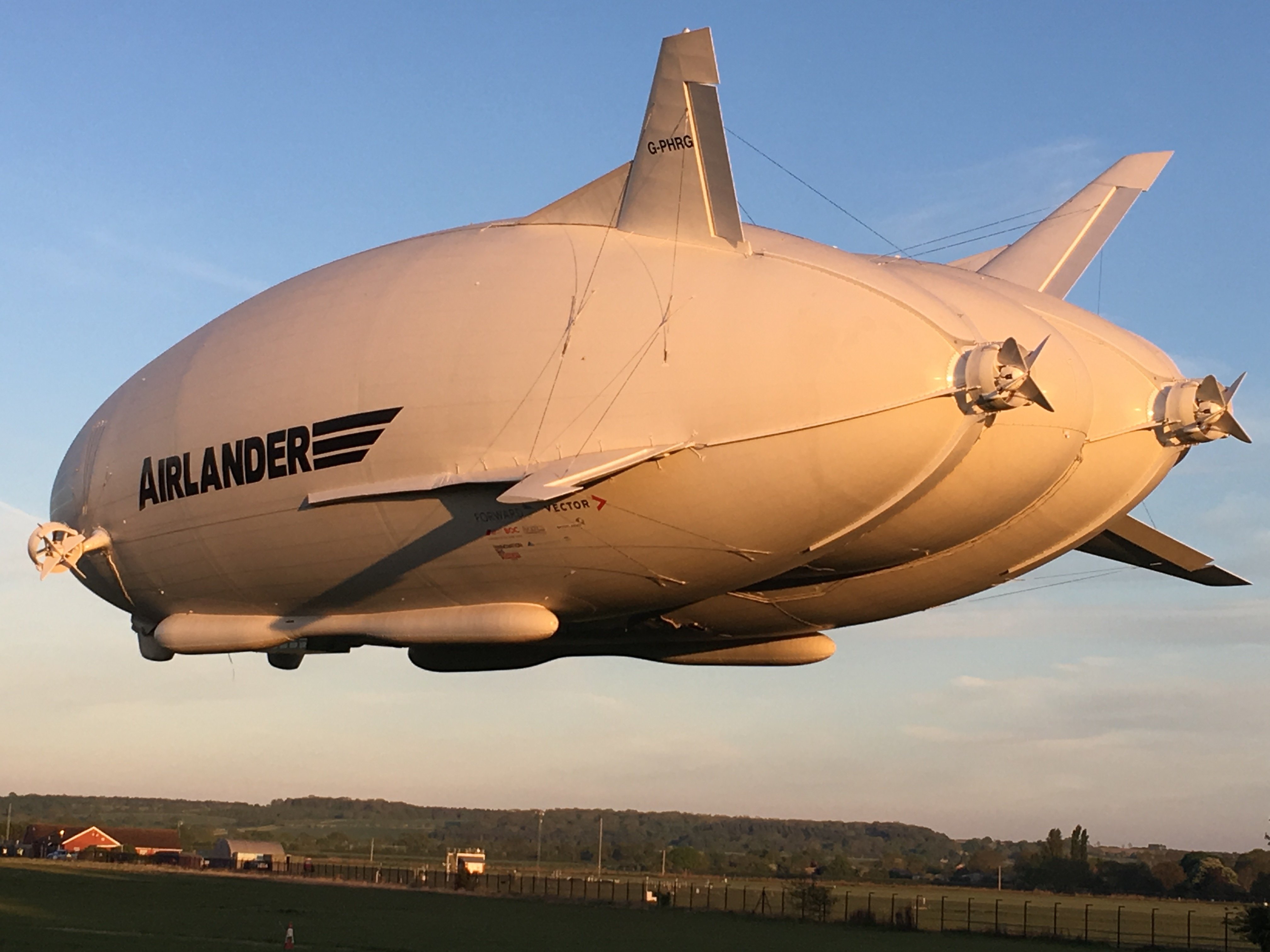Click Here to View This Page on Production Frontend
Click Here to Export Node Content
Click Here to View Printer-Friendly Version (Raw Backend)
Note: front-end display has links to styled print versions.
Content Node ID: 418850
Airship pioneer Hybrid Air Vehicles (HAV) believes it may be set to get its long and checkered path to market back on track. The UK-based company this week reported that it is working with what it described as “a top 10 global investment bank” to deliver a large-scale investment. It also announced the receipt of a deposit to charter one of its Airlander hybrid electric airships to an unidentified customer.
HAV has been trying to secure a launch customer for years. It has targeted four markets: communications and surveillance; luxury sightseeing; point-to-point cargo delivery; and short-haul passenger travel. The charter just reserved is for a commercial customer and an unspecified mission.
The payload for the Airlander is 10 tonnes (22,046 pounds) for most missions of up to 90 passengers, and its cruise speed is up to 92 mph. The airship’s helium-filled hull reduces the amount of fuel burn required just to keep it airborne.
HAV has not previously publicized charter or lease options, but now says that it has developed them “in response to the massive impact that Covid-19 has had on the travel sector.” The company has indicated it would need three orders to launch production, leading to a first flight in early 2024. But although there are clear benefits to this new form of transport, potential users have shied away from fully committing to such radical innovation.
The company has funded a protracted development by a mix of angel investment, crowdfunding, and government money. The latest of these was a convertible loan note from the UK government-backed Future Fund, which matched another round of crowdfunding to provide a total of £1.87 million ($2.56 million).
However, some £140 million is thought to be needed to launch production. In a statement, this week HAV said that “discussions with prospective investors introduced by the investment bank will commence shortly.” In the meantime, some of the 60 staff have been furloughed to take advantage of funding by the UK government’s job-support schemes, which counteract the potential unemployment resulting from the ongoing coronavirus restrictions.
HAV is also seeking funds from local or national authorities that could house the manufacturing facility. The company left its previous base on the iconic Cardington airship site in central England after the prototype Airlander was destroyed when it detached from its mooring mast in late 2017.
In a recent online presentation to the Royal Aeronautical Society, chief technical officer Mike Durham said there were now “very few technical unknowns with the production aircraft.” He stressed the Airlander’s “dramatic” green credentials. He claimed the production Airlander would already save 75 percent of carbon dioxide emissions, compared with a jet airliner. Replacing the front two of the airship’s four combustion engines with 1,000kW electric motors would increase the savings to 90 percent, albeit with a significant range penalty. A fully electric Airlander saving 100 percent could be in service in 2030, according to the manufacturer.
HAV is working with Collins Aerospace and the University of Nottingham to develop hydrogen fuel cells capable of holding 6,000-9,000kW of energy that would power the electric motors. Durham said that HAV was continuing to monitor solar energy and battery power options. But hydrogen fuel cells provide three to four times the power density of batteries, and is “still only six to seven times worse than kerosene,” Durham added. The storage vessels would fit in the airship hull rather than take up payload space in a conventional aircraft.
On a 170-mile city pair such as Liverpool on the UK mainland to Belfast in Northern Ireland, flying to and from sites in the city center, the journey by Airlander would produce 4.75 kg of CO2 per passenger, compared with 67.75 kg for a jet airliner, when taking into account the emissions generated by the ground transport to and from the airport. The end-to-end journey by airship would take five hours 20 minutes— just one hour longer when taking full account of travel times to and from airports. The ticket price would be similar, but the seating would be premium economy standard, Durham said.
One key advantage of hybrid airships is that they scale up easily. Durham said that a much larger Airlander 50 could carry 200 passengers or 50 tonnes of freight for 4,600 miles.
